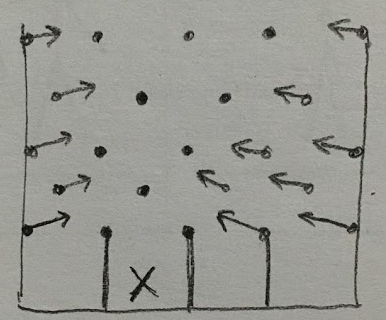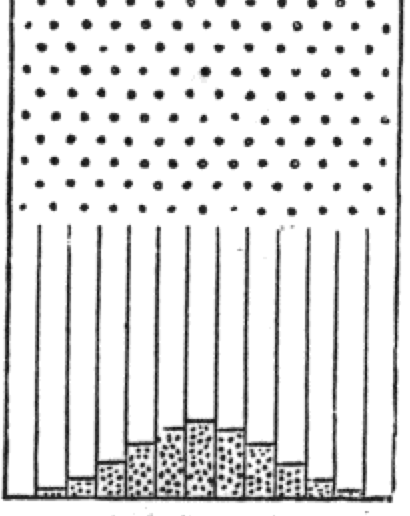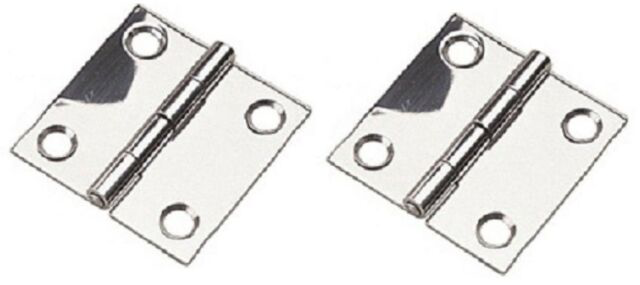-
Posts
2578 -
Joined
-
Days Won
21
Content Type
Profiles
Forums
Events
Everything posted by Ghideon
-
I think the reaction would be: -"It is an unscientific concept" or -"Ok, let's find the flaws" Isn't it hard to find a rigorous model of a "design" vs "undesigned" universe, "designed with no designer" and a model of "purpose" vs "no purpose"? And with out such models, how can observations be made to test the models and their predictions? If there is no model or observations then I suppose the reaction will be that the concept is unscientific. edit: For a shorter and more effective answer, see @Strange's above
-
I don't think we intended to claim that the show was fake, just discussing if it was possible to engineer such a machine. But your concern raises an interesting related point of view. As said above each ball is random, allowing for the show creators to utilize these moments of "luck" or "excitement" in the show. But since the outcome, in the long run, is mathematically proven I think the network that run the show can make solid calculations about the payout of prize money. I haven't tried the math but given the number of balls per show, the number of slots, the payout of each slot, the number of shows per season (and maybe some more) one could predict the budget for the prizes for one season of show. So given that there are enough shows planed there is not so much need for fakes, at least not to "protect" the shows budget. (There could of course be other reasons to try to affect the odds.)
-
I think the comparison is not completely right. I think you need two rockets, one accelerating equal to gravitation at ground level on earth. The second rocket accelerates slightly less, same as gravity at the top of the rocket standing on earth. Two observers, one in each accelerating rocket, will be affected by different acceleration as they are in the stationary rocked on earth. Does that makes sense? (This is the same as @Bufofrog said, just differently worded)
-
I have zero experience from such construction but it is a fun question! Intuitively I think of a light ball. But not too light, it needs some momentum so that adjustments to its path does not look too obvious. Then I would drill holes along the length of the pins the ball bounces off, one row of holes in each pin. The pins will be individual rotatable and connected to individual air flow controls. That means that any pin can blow air in any direction, individually. Finally I would try to program the pins airflow and direction so that the active pins form a "funnel". At the top, where the ball is dropped there is no airflow. Then along the desired path from top to bottom more and more pins are blowing air slightly towards the centre of the desired path. That makes the first few bounces random and then the control kicks in. If the airflow is gradually stronger further away from the paths that lead to the desired slot the ball will have a very limited chance of bouncing there. Illustration, X is desired slot and arrows is active airflow.
-
Welcome to our sponsored member poll! Answer the questions for a chance to win a premium set of headphones. The selected winner will be PM’ed by our staff. What is your self-assessed level of expertise within your favourite area? (check one option) - Beginner - Average ⌧ Professional What is our self-assessed level of confidence regarding your contributed material? (check one option) - Poor, I never feel that I’m, right - Most of my posts are correct ⌧ I am never wrong What forum section do you most often post in? (Select one from the drop-down list) Speculations If you are drawn as winner, what brand of headphones do you prefer our sponsor to ship to you? - Bang Olufsen - Bowers & Wilkins - Harman Kardon ⌧ Dunning Kruger
-
I would say that due to miniature imperfections in the balls, the dropping mechanism and the pins. If we look at the first pin, there will be small fluctuations in force and angle of the drop so that it is 50/50 percent change for the ball to go left or right. If the imperfections are small enough the left or right path is not predictable for a single ball. Any small imperfections add up along the balls' path making each pin more or less a 50/50 chance. If there would be too much imperfection the odds would be off, for instance if the machine always would drop the ball too far to the left or right. One should try to build the drop with good* precision. This explanation assumes that the machine is built to be random. If not, there are numerous options. The pins could be spinning or vibrating, There could be an airflow behind the glass front. And lots of others. So far we have discussed one ball. Over a large number of balls the average outcome is very predicable. Unless machine is constructed to be non-random a large numbers of balls will approximate a normal distribution**. This means that there will be more balls in the centre slots than at the edges. After dropping hundreds of balls in the wall machine the piles would look similar to this: Does this answer your question? From here we could discuss the math and its implications on the game setup. Or mechanical aspects of the machine. There are also Some notes: That requires that the machine is built as vacuum chamber. We can assume the machine is built that way. There could be a random generator connected to the drop mechanism allowing it to change the force by some small amount, but not enough to be visible. *) If the precision were 100% perfect all the balls could possibly land exactly head on the first pin, bounce up and down and finally come at rest there. The machine needs (and will always have) some tiny imperfections. **) Example machine and the math is discussed in https://en.m.wikipedia.org/wiki/Bean_machine edit: x-post with @Strange. And no, we did not plan to create identical answers
-
Good point! Maybe I could start a thread directly in trash can...
-
Hmm, that looks like a good idea ... (or maybe drinking whisky with salt is a good idea? But that is probably suited for a separate thread. Psychology, chemistry or speculations, you choose ...)
-
Since the current seems to be drawn as a loop it's direction is into the paper on one side and out of the paper on the other side. Since the B-field seems to have same direction in both of the air gaps and the current have opposite directions you have to take this into account in the calculations. Your assumption is wrong. There cannot be a net force on the system as it is configured in the picture above.
-
Thanks for the kind words @Phi for All. And cheers to @iNow! Disclaimer: The only major brain fart (that I've been made aware of ) on this forum came after a few drinks. The next couple of posts from me may have to be taken with a pinch of salt, at least if a few other members would follow @MigL
-
Incorrect. A charged particle is affected by both the magnetic and the electric field. You need to take both fields into account. The resulting force acting on the particle does not necessarily accelerated the particle along a path that follows the electric field lines. If you claim otherwise, please provide the math so it can be reviewed.
-
Ops! I did not take time differences into account when posting! Maybe we can have a pint (or two) at my next promotion. My conclusion so far regarding this forum and its members: I'll hang around and keep posting...
-
There is an E-field (vector), 45 kV, in the picture. Is that to be taken into account?
-
This is my 1000th post! Time to celebrate, This is a fine moment to open the Islay Single Malt I got for Christmas. Cheers from Ghideon, to all new and old form members!
-
Sources are pretty good. Unfortunately they do not support your claims. Nowhere is it stated that Newtons laws are optional. You need to apply the concepts in the sources together with other laws to be able to make a prediction. For instance, first source states that: http://web.mit.edu/mouser/www/railgun/physics.html That is another way to state what you are attempting. And if you weld this unmoving slug into the barrel of the railgun, the railgun will not be able to propel itself.
-
Wrong Incorrect in this context. If the "current" (electrons) experience a force and not held back by a force from the wire then the electrons will accelerate while the wire remains stationary. You are effetely saying that if three persons are in the box instead of the lifter, and the persons push at correct angles, then the box will lift off the ground. Where did you learn this stuff? Do you have a reference I may look at?
-
A hinge, to me, implies a foldable structure. Applying a force will affect the shape of the structure. Your triangular design is geometrically stable. It looks like you missed the above. Can you provide a detailed analysis why and how you agree or disagree?
-
The new picture above contains current, I and magnetic field, B. The wire is not attached to anything. So I guess that the wire will be pushed away from the source of magnetic fields B. The picture does not apply to the lifter in earlier drawings. I do not know what that is, does it affect one's ability to make sense or learn physics?
-
If the wall has a hinge* so that it can be folded then that can be taken into account by adding relevant force vector to the picture. But since you fail to comment on my analysis it's hard to know. *)
-
I do not question the addition of vectors. I question the fact that there are vector missing. Vectors that are important to be able to predict the outcome of the systems behaviour if it was built and observed. The reasoning is to be found above as a comment on your angled wall example. Another attempt at explaining, reasoning top down from abstraction: We look at the big picture. You have your lifter in the box and it is able to propel itself up, OK? Then replace the lifter with a person. The person pushes his hands against the top of the box, from the inside. From the outside there is no difference, so the internal forces on the box will make it lift and accelerate. Does this sound plausible? Then apply that reasoning (iteratively if you wish) layer by layer through the internals of the system, applying physical laws and formulas as you go, mechanics, electrics, magnetics, down to quantum level if necessary. Always there will be a force and a counter force similar to the person in the box, but applied to smaller and smaller parts of the structure. There will never be a level where the total forces don't add. If there is a net force on some level, that means that there are forces (vectors) that were neglected.
-
The lifter, working in the box, is by definition reactionless. It's funny I did the math you wanted and you choose to ignore to deal with all relevant forces involved in the system.
-
p=mc seems incorrect for photons since photons do not have an invariant mass m. My opinion, based on (limited knowledge) about this is that it seems to mix classical mechanics that do not apply to the model of photons. But I may be wrong, so I would be happy for reference where photon's momentum is calculated from it's invariant mass "m" and the speed of light, "c".
-
That's always a possibility! But when you verified that the lifter will work in the concealed box, accelerating with it upwards, that was the final confirmation that the physics you provide is flawed. To he honest, yes of course! It just took a while to write down the latex notation a few pages back. The vector algebra is really simple in this case. Too bad my explanations fail to show that your math may be correct but does not seem to describe forces of any physics. My first post: I had this initial feeling that you were pursuing a reactionless drive of some sort but the lack of details made it hard to make that statement in the first post. So it was better to address the math question since it was interesting and contained no baseless claims.
-
I think you missed my comment:





